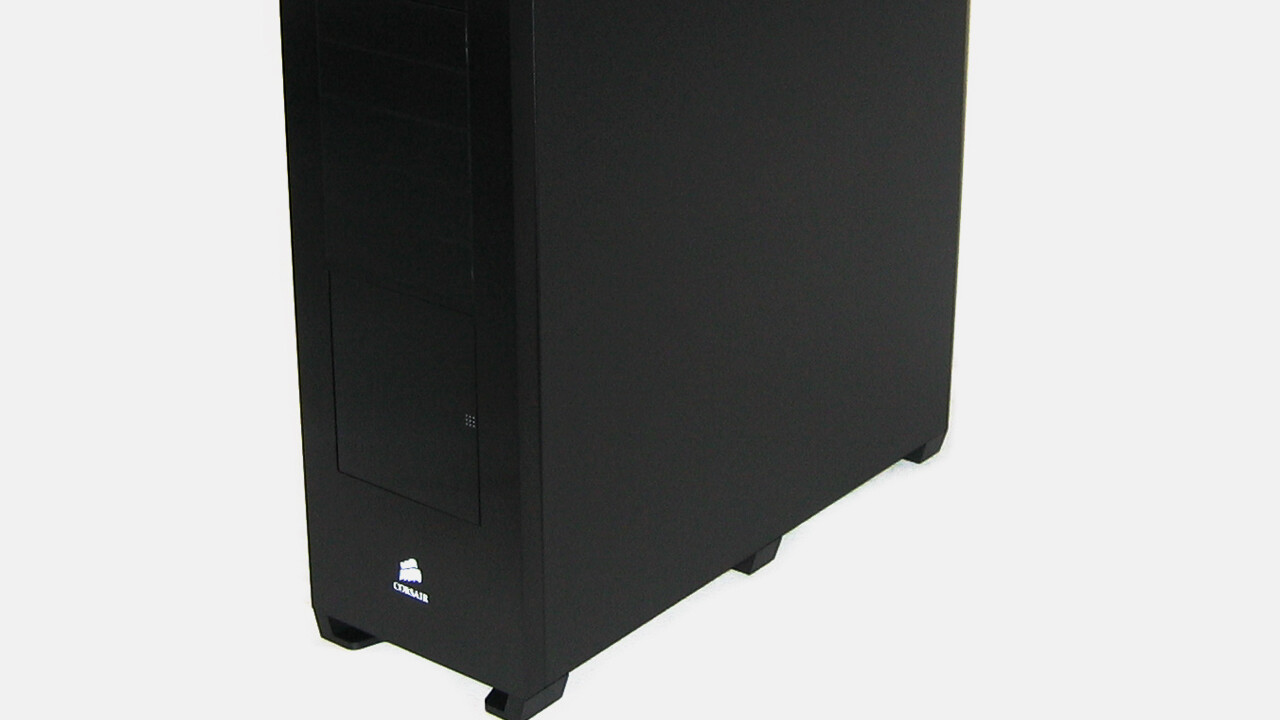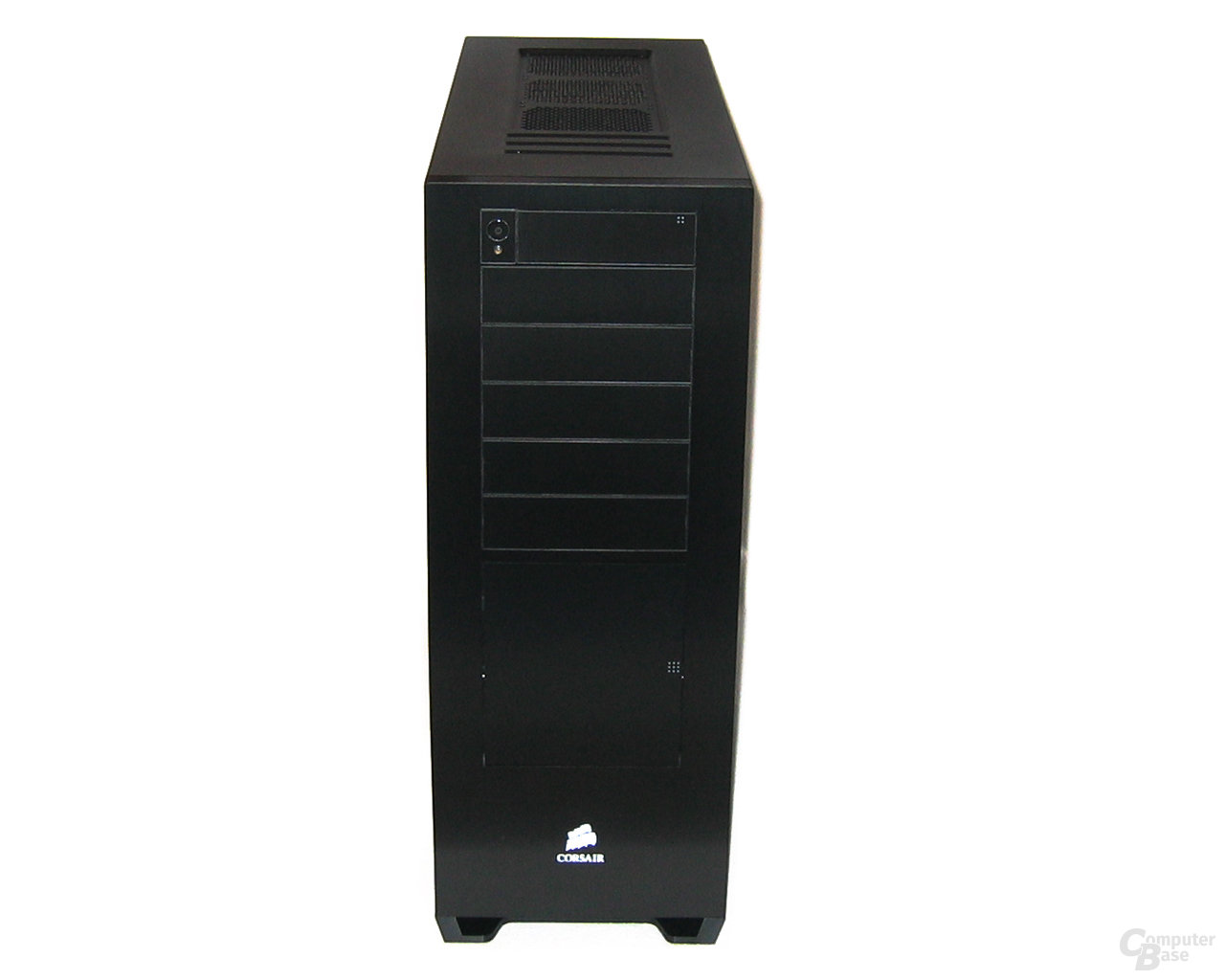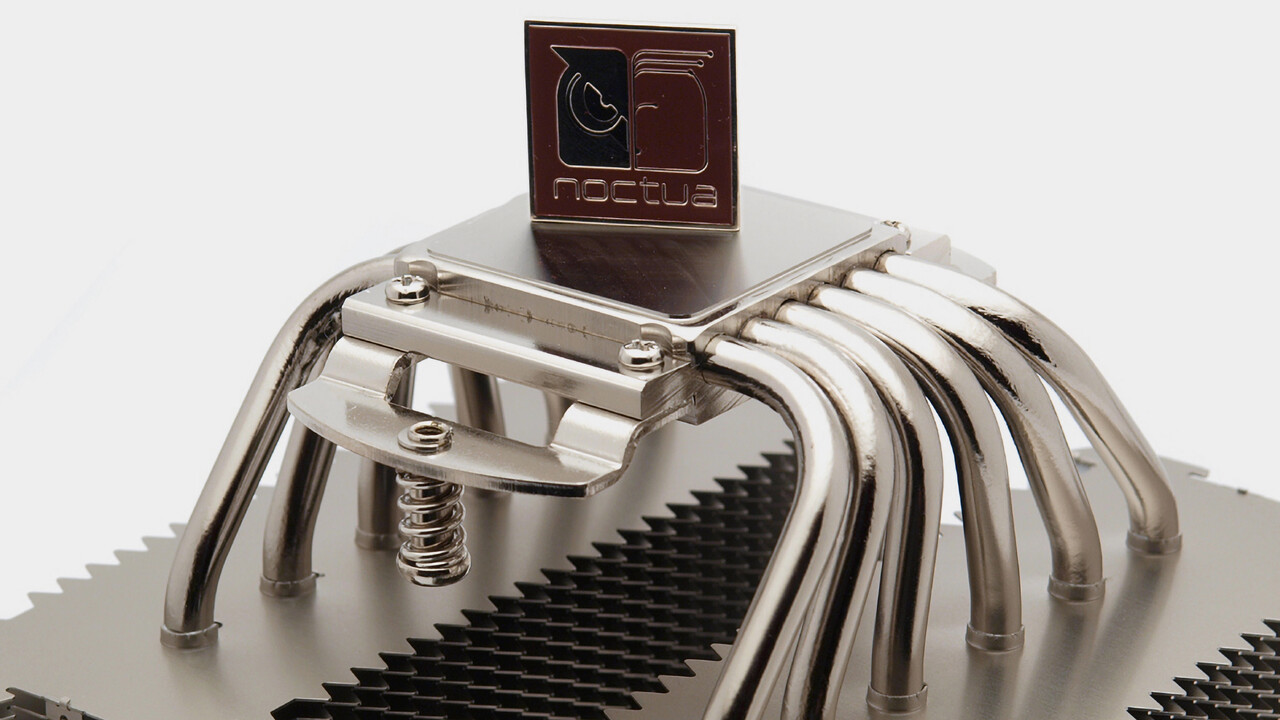When tested 15 years ago: Corsair‘s Obsidian 800D was ideal for water cooling 86 comments

Corsair entered the home market 15 years ago with the Obsidian 800D (review). The gigantic tower offered infinite storage space, an observation window into the interior of the case and was particularly interesting for users of water cooling systems.
A colossus made of aluminum and steel
With dimensions of 609 × 229 × 609 mm (H × W × D) and a weight of approximately 16 kg, the Obsidian 800D was a true colossus. Corsair used a lot of steel for the outer shell of the case as well as an aluminum front. The case design was simple and most surfaces were smooth. A large observation window was built into the left side wall, which allowed a view into the interior of the case. On top there was a perforated plate underneath or on which up to three 120mm or 140mm fans or, for water cooling users, a corresponding radiator could be attached.

Corsair Obsidian 800D – Front image 1 of 25
Hidden under a flap on the front of the case was the ports kit with four USB ports, one FireWire, and two audio ports. Underneath were five 5.25-inch drive bays, covered with aluminum and plastic covers. One section down was a hard drive cage that could hold up to four 3.5-inch hard drives via a hot-swap mechanism. A 140mm fan was mounted on the back of the Obsidian 800D. If the seven internal mounting locations for the fans weren’t enough, you could also find a pipe passage here for external water cooling. The finish of the colossus was always excellent and left. nothing to be desired. The interior was painted entirely black and had a few comfort features. For example, the Obsidian 800D offered a variety of cable glands for all supported motherboard formats. The expansion cards were attached using thumbscrews and the drives were mounted without tools. facility.
The Corsair Obsidian 800D has faced criticism, particularly regarding the lack of pre-installed fans. Of the maximum seven fans that can be installed, only three have been installed at the factory. This left a lot to be desired, especially considering the high price of 250 euros. The biggest strength of the case was the enormous amount of space. Whether an E-ATX motherboard or a graphics card up to 36.5 cm long: the Obsidian 800D had plenty of storage space.
Quiet and warm in factory condition
The absence of fans in factory condition was noticeable in two measurements during the test. On the one hand, the test system consisting of a passively cooled AMD Athlon The passively cooled processor in particular provided a good insight into the cooling performance of the case. With the fans set to 12 volts, the CPU temperature was 82 degrees Celsius, almost 30 Kelvin above the next best case. As expected, when the fans were limited to 5 volts, the result was even worse at 90 degrees Celsius.
If you wanted high cooling performance in the Obsidian 800D, you either had to install many fans, rely on fully active cooling, or immediately switch to water cooling – the case had enough space for many radiators.
Conclusion
Given the high price of 250 euros, it was already clear that the Corsair Obsidian 800D should appeal to a small circle of enthusiasts. The manufacturer approached them with excellent workmanship, simple design, numerous comfort functions and a first-class water cooling base. However, due to abysmal factory cooling performance, Techoutil was unable to recommend the case 15 years ago.
In the category “In the test 15 years ago”, the editorial staff consults the test archives every Saturday since July 2017. We list the last 20 articles published in this series below:
Sapphire earned the Radeon HD 5750 a recommendation. AMD’s Eyefinity guaranteed gaming fun on three screens. The Radeon HD 5750 was too expensive despite a recommended price of 115 euros. as Radeon DirectX -11-EntryATis affordable HD 5870 as first graphics card with DirectX 11Intel’s Core i5-750, i7-860 and i7-870 on Socket 1156Cooler Masters Hyper 212 Plus as a budget coolerIntel’s X25-M Gen 2 SSD was the champion with 280 MB/sNokia’s N97 would have I wished I had a smartphone, the Phenom II X4 965, back in the GHz racesCorsair’s H50 was water cooling for everyoneApple’s iPhone 3GS was faster than everThermalright’s CoGaGe for enthusiasts on a budgetSparkles GeForce GTX 260 with manual power saving modeEdifier S330D and S530D with good Far Eastern soundNZXT Whisper was “too hot to handle”The Sapphire HD 4890 Atomic Radeon was without MakelCooler Masters HAF 922 was a hybrid HAF Storm Sniper
Even more content of this type and many other reports and anecdotes can be found in the retro corner of the Techastuce forum.

A cooling systems specialist, Sophie helps enthusiasts optimise their setups with watercooling.


